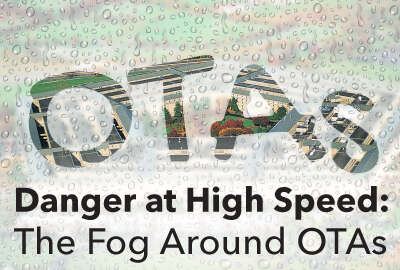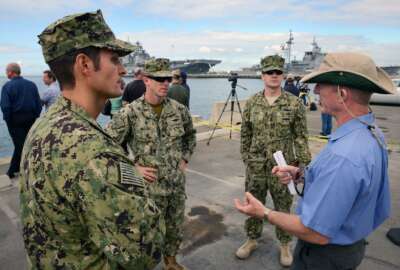 Exclusive
Exclusive Acquisition experts help inform series on other transaction authorities
On this week’s On DoD, Federal News Radio Defense Reporter Scott Maucione goes a bit deeper into Federal News Radio’s series, Danger at High Speed: OTAs in...
To listen to On DoD on your phone or mobile device, subscribe on PodcastOne or Apple Podcasts. The best listening experience on desktop can be found using Chrome, Firefox or Safari.
On this week’s On DoD, we go a bit deeper into Federal News Radio’s series, Danger at High Speed: OTAs in Action. This edition of the program features some of the extended interviews Scott Maucione conducted with acquisition experts as part of the reporting process for his two-part series on the Defense Department’s use of acquisition authorities.
Angela Styles, a former administrator of the Office of Federal Procurement Policy told Scott that OTAs are “like contracting with no rules.”
“There’s no rules for competition, there’s no protests, none of the things that you would consider just regular day-to-day oversight,” said Styles, who is now a partner at the Bracewell law firm. “And I think it may be more of a symptom than it is the fix. The problem is that the procurement system itself is really clunky at this point in time, particularly for DoD. For years and years, Congress put on more rules and regulations, which makes the products and services more expensive and it also repels some of the companies that DoD wants to work with and probably needs technology from.”
David Berteau, a former assistant secretary of Defense for logistics and materiel readiness, said that while the department’s desire to gain access to non-traditional vendors is one explanation for the recent explosion in the use of OTAs, but so is the need to move faster.
“It takes a long time to go from concept to signed contract following the normal acquisition procedures,” said Berteau, who now serves as the president of the Professional Services Council. “There’s just a lot of steps involved. There’s a lot of checks and reviews that have to be done, and there’s a lot of waiting in line for your turn to be checked and reviewed. In most cases it is time consuming both pre-solicitation and after the solicitation has been issued, those timelines probably are getting longer.”
Berteau says PSC is enthusiastic about DoD’s use of OTAs, as long as they’re primarily used for situations in which the government wants to quickly prototype several potential approaches to a problem before it decides which product or service to buy.
“We’re a little more concerned about using other transaction authority as just a mechanism of circumventing the lengthy processes involved in following the Federal Acquisition Regulation and the various supplements to the FAR to go through the contracting process,” he said. “Because our view is if you’re going to try to fix contracting and make it more streamlined, more efficient, more effective for some, you really should do that for everybody. You really shouldn’t do it just for the three or five or 10 percent of research and development money that gets spent through other transactions authority.”
Scott Amey, the general counsel at the Project on Government Oversight, said his group is worried that DoD may be trending in the direction of using OTA’s not just for prototypes and with non-traditional companies, but for larger production items, and with well-established Defense vendors.
“I think a lot of the move has come from contractors. They are pushing for these, because if they can get out of the 1.900 pages of the FAR, they’re more than glad to do that, and I think they’ve been able to convince certain members of the House Armed Services Committee and the Senate Arms Services Committee that this is kind of the wave of the future,” he said.
Amey acknowledged there are benefits to using OTAs instead of traditional contracts, at least in some cases.
“But I’m always afraid that we’re using them for the wrong purposes, and with the lack of transparency, the lack of accountability, the lack of competition, now that we’re moving into production OTAs, we have to seriously consider how we’re using them, whether we’re using them as intended, whether we’re getting the goods and services that we really want and need at the best cost and prices and that we’re just not using this procurement vehicle as a way to circumvent the rules,” he said. “I just worry that this is going to result in a lot of waste, fraud and abuse in the future.”
Copyright © 2024 Federal News Network. All rights reserved. This website is not intended for users located within the European Economic Area.
Jared Serbu is deputy editor of Federal News Network and reports on the Defense Department’s contracting, legislative, workforce and IT issues.
Follow @jserbuWFED





